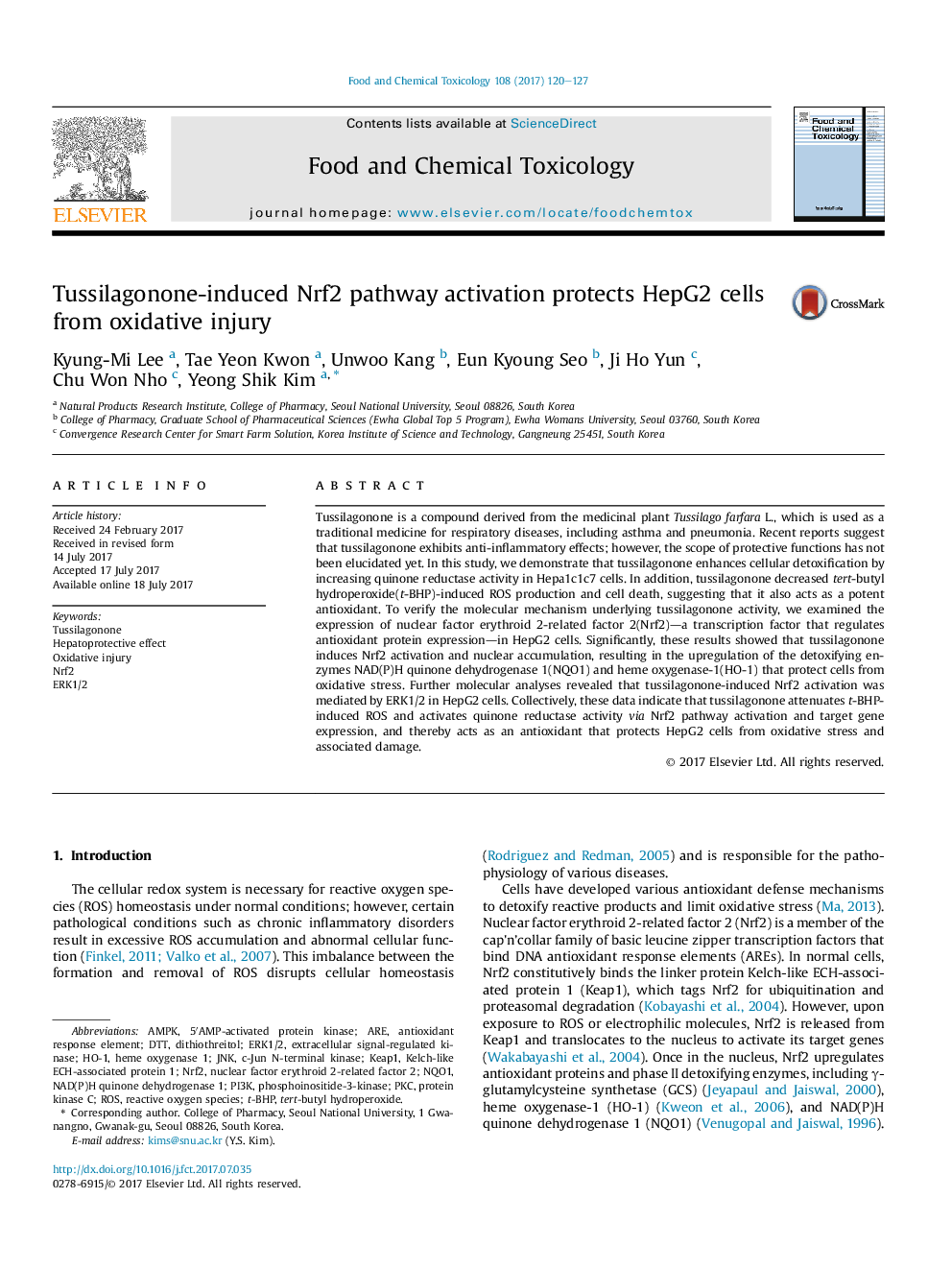| کد مقاله | کد نشریه | سال انتشار | مقاله انگلیسی | نسخه تمام متن |
|---|---|---|---|---|
| 5560011 | 1403306 | 2017 | 8 صفحه PDF | دانلود رایگان |

- Tussilagonone decreases t-BHP-induced ROS production via the Nrf2 pathway.
- Tussilagonone induces the expression of Nrf2 and its target genes.
- The activation of Nrf2 by tussilagonone is mediated by ERK1/2.
Tussilagonone is a compound derived from the medicinal plant Tussilago farfara L., which is used as a traditional medicine for respiratory diseases, including asthma and pneumonia. Recent reports suggest that tussilagonone exhibits anti-inflammatory effects; however, the scope of protective functions has not been elucidated yet. In this study, we demonstrate that tussilagonone enhances cellular detoxification by increasing quinone reductase activity in Hepa1c1c7 cells. In addition, tussilagonone decreased tert-butyl hydroperoxide(t-BHP)-induced ROS production and cell death, suggesting that it also acts as a potent antioxidant. To verify the molecular mechanism underlying tussilagonone activity, we examined the expression of nuclear factor erythroid 2-related factor 2(Nrf2)-a transcription factor that regulates antioxidant protein expression-in HepG2 cells. Significantly, these results showed that tussilagonone induces Nrf2 activation and nuclear accumulation, resulting in the upregulation of the detoxifying enzymes NAD(P)H quinone dehydrogenase 1(NQO1) and heme oxygenase-1(HO-1) that protect cells from oxidative stress. Further molecular analyses revealed that tussilagonone-induced Nrf2 activation was mediated by ERK1/2 in HepG2 cells. Collectively, these data indicate that tussilagonone attenuates t-BHP-induced ROS and activates quinone reductase activity via Nrf2 pathway activation and target gene expression, and thereby acts as an antioxidant that protects HepG2 cells from oxidative stress and associated damage.
132
Journal: Food and Chemical Toxicology - Volume 108, Part A, October 2017, Pages 120-127